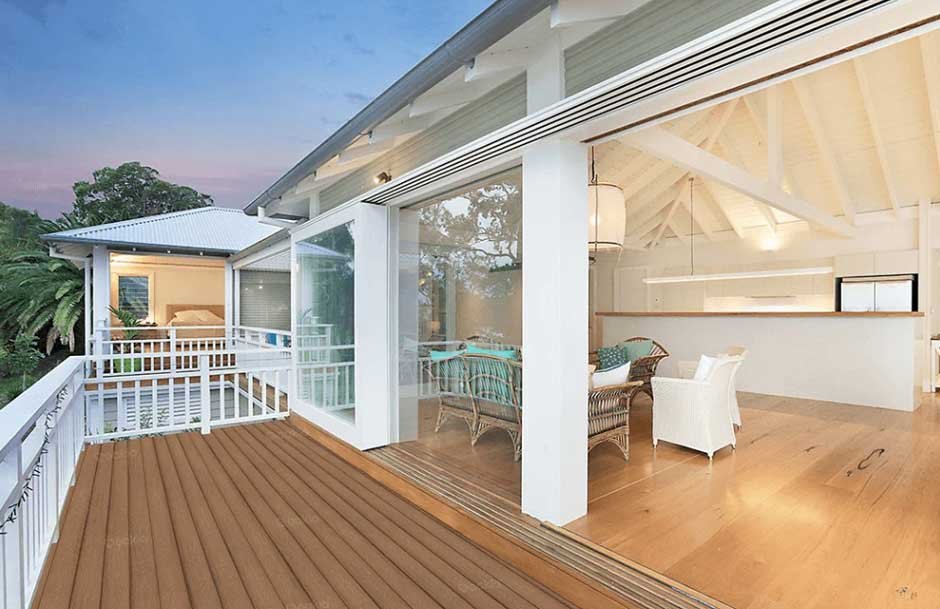Understanding Deck Railing Requirements
Knowing the rules for deck railings keeps projects safe and compliant. I learned this firsthand when a building inspector flagged my deck railing height for being too low during a renovation. Correcting it delayed my timeline but showed me how critical proper requirements are.
Building Codes and Regulations
Deck railings need to comply with specific rules based on location and purpose. These rules affect structural integrity, height, and spacing.
International Residential Code (IRC)
The IRC requires residential deck railings to be at least 36 inches tall and openings between balusters or spindles to be less than 4 inches. This is the standard for homes across the United States.
International Building Code (IBC)
IBC covers safety standards for commercial properties. Here, deck railing height typically needs to reach a minimum of 42 inches. Following these rules ensures safety in high-traffic or multi-story buildings.
Local Variations
Some areas modify IRC or IBC standards with additional codes. For example, coastal regions might require railings to withstand higher wind loads. Checking with local authorities avoids any surprises during the inspection.
Safety Considerations
Safety is critical when installing deck railings. Adhering to proper guidelines prevents accidents and keeps the structure secure.
Baluster Spacing
Baluster spacing affects both safety and aesthetics. Openings must be no wider than 4 inches to comply with building codes and prevent small children or pets from squeezing through. I once installed a railing with balusters slightly wider apart; it failed the inspection, costing me extra time and money to fix. Double-check spacing before installation.
Load Requirements
Deck railings need to withstand significant force to maintain structural safety. Codes typically require railings to withstand a load of 200 lbs applied horizontally to the top rail. Check local regulations for specifics. Sturdy materials and proper fastening methods help the railing meet these standards. For added safety, always inspect fasteners and materials for durability before installation.
Measuring for Deck Railing Installation
Accurate measurements are the foundation of properly installed deck railings. They directly impact safety, compliance, and aesthetics.
Determining Railing Height
Measure vertically from the deck surface to the top rail for deck railing height compliance. The International Residential Code (IRC) specifies a minimum height of 36 inches for residential decks, while commercial applications generally require 42 inches under the International Building Code (IBC). Always verify local regulations to match the code requirements in your area.
Measurement Point
Anchor the measuring tape at the finished deck surface, not the subfloor or unfinished boards. I once measured from an incomplete deck surface and had to redo the entire railing to meet height standards. Small missteps like this can lead to extra work and unexpected costs.
Calculating Baluster Quantity and Spacing
Accurate spacing and the right number of balusters are key to safe and visually appealing deck railings. Measurements should prioritize meeting safety codes, like maintaining no more than a 4-inch opening between balusters.
Baluster Calculation
Measure the total length of the railing section in inches. Divide that by the desired gap size (maximum 4 inches) plus the width of one baluster. Round up to get the number of balusters needed for each section. For example, a 120-inch railing where each baluster is 2 inches wide and the gap is 4 inches requires 20 balusters: 120 ÷ (4 + 2) = 20.
When redoing my deck railing, I forgot to include the baluster width in my initial calculation. I ended up short several balusters, which delayed the project and overshot my budget. Triple-checking every calculation saves time and money.
Installing Deck Railing
A smooth installation combines preparation, proper assembly, and inspection for safety and compliance. I learned the importance of preparing thoroughly after forgetting to verify my materials, which delayed my project by a week.
Preparing the Deck
Clear the work area completely to avoid obstructions. Inspect the deck surface for structural issues like loose boards, cracks, or rot. Repair any damage before proceeding. Mark post locations following building codes for deck railing height, usually 36 inches for residential decks. Pre-drill holes for mounting brackets to simplify alignment during installation.
Installing the Railing System
Install posts securely attached to the deck frame with bolts or brackets. Measure and cut railing sections to fit between posts, double-checking with your original measurements. Mount the top and bottom rails using brackets, ensuring they are level and spaced correctly. Attach balusters, maintaining the required spacing of no more than 4 inches.
Ensuring Structural Integrity
Check all connections, including bolts, brackets, and screws, to confirm they’re tight and secure. Test the top rail to verify it can handle a horizontal load of 200 lbs without movement. Look for gaps or weak spots in the assembly. After failing an inspection, I once neglected this step and had to re-tighten everything.
Final Considerations
Attention to detail makes a big difference in the safety and longevity of deck railings. Before wrapping up your project, these last steps are worth revisiting.
Compliance Check
Confirming that your deck railing adheres to building codes is essential. Inspect the railing height to guarantee it meets minimum requirements—36 inches for most residential decks and 42 inches for commercial spaces based on IRC and IBC standards. Check baluster spacing to confirm it doesn’t exceed 4 inches.
I once had to remove and reinstall a railing because its height was just half an inch too low. That oversight cost me a lot of time and extra materials, so double-checking these details can save me trouble later.
Maintenance Tips
Regular upkeep extends the life of your deck railing. Clean the railing with a mild detergent to avoid weathering. Inspect fasteners to ensure they remain secure and rust-free. If you’ve used wood components, reapply protective coatings or sealants every 2-3 years.
After heavy storms, I always check my railing for loose parts or damage. This habit can prevent minor wear from becoming a bigger issue.
Conclusion
Double-checking deck railing height is critical for safety and compliance. I remember measuring from an unfinished deck surface once, which left the railing too low when the final flooring was added. That mistake caused rework and additional costs. Always confirm measurements against building codes before installation.





